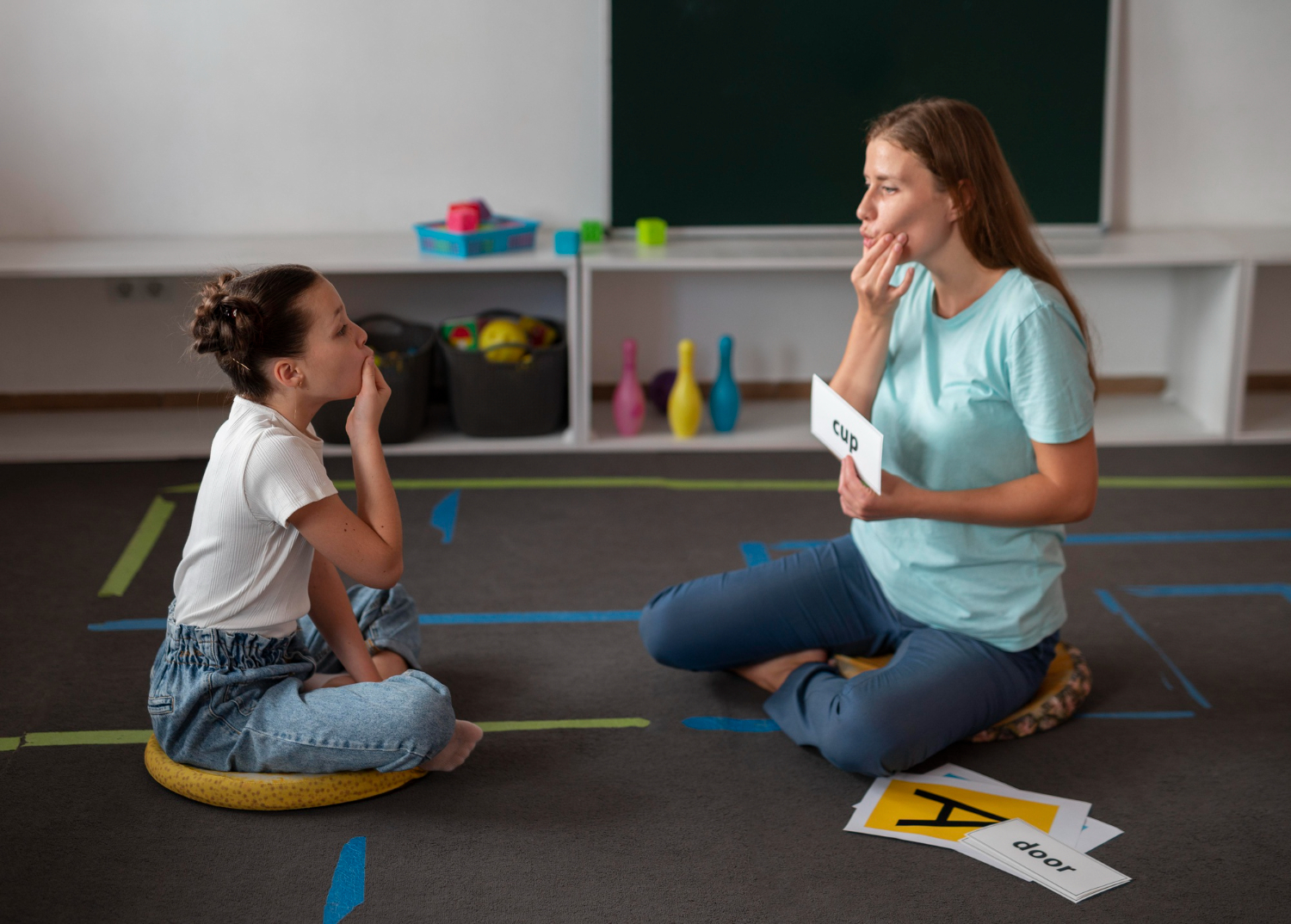Childhood-onset fluency disorder, also known as stuttering or stammering, is a common disorder. Children who stutter most often do it at the start of sentences, but stutters can also happen throughout sentences. Children might also do nonverbal things when they stutter. For example, they might blink their eyes, grimace, make faces, or clench their fists. A multifactorial speech disorder, it is normally seen with recurrent prolongations, reverberations, or blocks of sounds, syllables, phrases, or words. The repetition, as long as it does not happen more than once in every 10 to 12 sentences and lasts less than one year, will typically work itself out over time.
There are three main types of stuttering. Children who stutter might have one or more of these types.
Repetitions
This is when a sound, part of a word, whole word, or phrase is repeated over and over. For example:
‘A a a and I want that one.’
‘An an and I want that one.’
‘And and and I want that one.’
‘And I, and I, and I want that one.’
Prolongations
This is when a sound is stretched out – for example, ‘Aaaaaaaaaaand I want that one’.
Blocks
This is when a child tries to speak, and no sound comes out.
Causes of stuttering in children
We don’t really know why stuttering happens.
- It might be because there’s an error or delay in the message that a child’s brain sends to her mouth muscles when she needs to speak. This error or delay makes it hard for the child to coordinate her mouth muscles when talking, resulting in stuttering.
- Stuttering runs in families. This suggests that stuttering might involve genes passed on to children from one or both parents. It means a child is more likely to stutter if other family members stutter or have stuttered. But it doesn’t mean that a child who has a family history of stuttering will definitely stutter.
- Stuttering isn’t caused by anxiety or stress. But stuttering can cause stress, particularly for teenagers.
- A child can’t catch stuttering from somebody else. And a child who stutters can’t control it.
Stuttering in children often starts during preschool, often at 2-4 years. This is when children start to combine words and make longer sentences.
Some children don’t start stuttering until later in childhood.
Stuttering can start suddenly – for example, a child might wake up one day with a stutter. It can also build up over time.
Stuttering doesn’t actually affect preschoolers’ development. Preschoolers who stutter can have the same social skills as non-stuttering children. They’re less likely to be shy or withdrawn compared to children their age who don’t stutter.
But if stuttering continues into primary school, it can become a problem. Primary school children who stutter are less likely to be thought of as leaders by their peers. Primary school children and teenagers who stutter might not want to join in with classroom discussions and are more likely to be bullied than children who don’t. Teenagers who stutter can develop anxiety from their stuttering. They might feel self-conscious, have lower self-esteem, or find some situations challenging – for example, speaking in public or starting an intimate relationship.
According to DSM-5, certain criteria must be met to diagnose a childhood-onset fluency disorder.
A. Interruptions in normal fluency and time patterning of speech (unsuitable for the individual’s age) are exemplified by repeated occurrences of 1 or more of the following:
- Sound and syllable repetitions
- Sound prolongations
- Interjections
- Broken words (such as breaks within a word)
- Audible or silent blocking (filled or unfilled gaps in speech)
- Circumlocutions (word substitutions to evade challenging words)
- Words formed with an overload of physical tension
- Monosyllabic whole-word repetitions
B. The interruptions in fluency get in the way of academic or occupational accomplishments or social communications
C. If a speech-motor or sensory deficit is evident, the speech challenges are more than those typically connected with these problems:
Deficits in intellectual functions, like reasoning, problem-solving, planning, abstract thinking, judgment, academic learning, and learning from experience, are established through clinical assessment and individualized, standardized intelligence testing.
Deficits in adaptive functioning end up failing to achieve developmental and sociocultural standards for personal autonomy and social responsibility. Lacking continuing support, the adaptive deficits hinder functioning in one or more daily life activities, including communication, social participation, and independent living, across multiple environments, such as home, school, work, and community.
Start of intellectual and adaptive deficits throughout the developmental period.
What to do:
- Don`t finish children`s words/ sentences for them
- Don`t tell them it’s OK, and don’t advise them to “slow down“ or “relax“
- Listen to what is being said, not how it’s being said
- If the child gets upset about struggling to speak, if it lasts more than 6 months, seek out a speech-language therapist (not each child with stuttering needs that)
- Stuttering is not “cured“, but a speech-language pathologist can offer approaches that help children become better communicators.
It is important for children with childhood-onset fluency disorder to get diagnosed early to get early intervention. This is because it can affect communication development and hinder social skills. Cognitive-behavioral therapy is a widely known effective form of treatment (Koc, 2010). This form of psychological counseling helps the therapist identify and change possible methods of thinking that can worsen the individual’s stuttering. It can also assist the individual in determining how to figure out any underlying stress, anxiety, or issues with confidence and self-esteem that may be associated with stuttering. Another possible form of treatment is that of controlled fluency. With this form of speech therapy, the individual is taught to decrease the talking rate to pay attention when stuttering occurs. The individual can learn to prevent stuttering by gradually increasing the speech pattern to a more natural flow.
Hope this helps!
Best regards,
Satenik Haroutunyan, Pediatric department N1, Muratsan University Hospital




